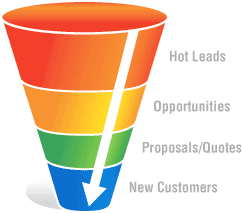It’s that time of year again – budget season and annual planning. YEAH!
Understanding the plan, the progress and next years investments require visibility. The visibility required to understand if you are directionally on track to hit plan and how to justify resources and budget. As I get the opportunity to teach folks all over the globe, I’m often asked what we should measure to ensure we are making fact based decisions and the answer is always, it depends. Depends on the market, the management team expectations, company’s point in its lifecycle, product lifecycle and alike. The most typical way organizations align product teams and operational groups is through annual planning and the business plan for your products.
Your business plan is your path forward. But to create a comprehensive business plan, you first must understand your business and the way your products fit into that business. Simply put, if you don’t know how operations, sales or any other area is performing, how can you make plans to improve?
The great thing about the systems and methods used in modern marketing is that most are measurable. But that doesn’t mean you want to measure everything. It’s important to focus on the analytics that inform the business about where you are relative to corporate-wide goals, as well as your given portfolio mix and its contribution to the business. Reviewing these analytics helps you figure out what’s next.
Of course, it’s one thing to know your numbers; it’s another to understand those numbers in context. You must understand where to invest based not just on analysts’ stories and high-level trends, but also on the effectiveness of products in the market and the historical return on their efforts.
To keep it simple, ask your teams to describe the performance of products and investment opportunities by addressing three items: size, shape and direction.
Size: How large is the opportunity relative to other opportunities?
Let’s say you manage a $4 million product line. How much of the company’s resources should be used to support that? How does that change if it’s a $10 million company or a $10 billion company?
It’s important to understand how big your portfolio or product is relative to other portfolios and products in the business. And while it’s easiest to focus on revenue, it’s also important to know your profit contribution, as the health of your margins can affect both your investment levels and your ability to scale.
Remember, not all product lines or portfolios are created equal. Every product has different revenue and profit contributions. Once you understand yours, you can analyze the overall size of the organization in the portfolio, and your size and contribution to that portfolio (both top line and bottom line).
Shape: How does it target your most profitable and satisfied segments?
When you’ve identified the relative level of influence of your product, it’s time to analyze the shape of the business. Imagine your business as a series of three triangles representing customer count, revenue and profits. Consider your customer base: what does a large customer look like, what does a small customer look like? How many customers do you have?
Next, calculate how much these customers contribute to revenue, and how much they contribute to profits. Some customers may produce a lot of revenue but don’t generate comparable profit because they receive better price points or better service levels. All kinds of drivers might produce the traditional pyramid across customer accounts, revenue and profits.
It’s important to understand this segmentation so you can optimize where to invest. You want to analyze which products solve the problems of your most satisfied and profitable customers to identify projects and opportunities that best benefit your business.
Direction: How will it affect the trajectory of the product and business?
Look at the direction of your company. Is it flat, declining or growing? Assess the direction, not just of the top line, but the bottom line as well. Are you leaking profits? Perhaps you’re growing revenue but every dollar that comes in is eroding incremental profit. Consider how these things affect fixed and variable costs, and ultimately, the way you run your business.
Every product or portfolio also has its own trend. It’s important to know the quarterly and annual financial performance of each, to understand the product trajectory relative to overall business goals and the goals of other products. Then you can decide which opportunities are worth pursuing.
Having access to data is meaningless unless you shape it, customize it and make it relevant to your business. When you understand the size, shape and direction, you understand how your business operates and the context of your products within the business. This allows you to think, decide and act. But this isn’t a one and done exercise. It’s a loop that requires continuous monitoring. Commit to performing at least an annual assessment and start putting your data to work for you.
When Losing 800 Customers Pays Off
I once ran a $32 million business with 10,000 customers. It was primarily subscription and user based with some additional premium features in a mature market.
A small number of customers contributed a large amount of revenue, and a large number of customers contributed a small amount of revenue.
As we started looking at trends and customer segmentations, we created five tiers. The lowest-value tier was the “single office, home office” group. Approximately 3,000 folks were responsible for about $2.3 million; it was just about a break-even business. They could be a slightly annoying subset. Since they were infrequent users who were not proficient, they consumed development and support capacity and dragged on profit. Upon further analysis, we found that there was actually a trend down on this particular segment of our customer base.
Our solution? Triple their pricing. We understood that we would lose a lot of those customers but the results were interesting. While we did lose 800 customers, the revenue actually went up to $3.6 million, $1.3 million of which was pure profit.
By understanding the size, shape and direction of our business, we were able to confidently make this decision resulting in lower costs and increased revenue.
A version of this article originally appeared @ http://pragmaticmarketing.com/resources/analyze-this



